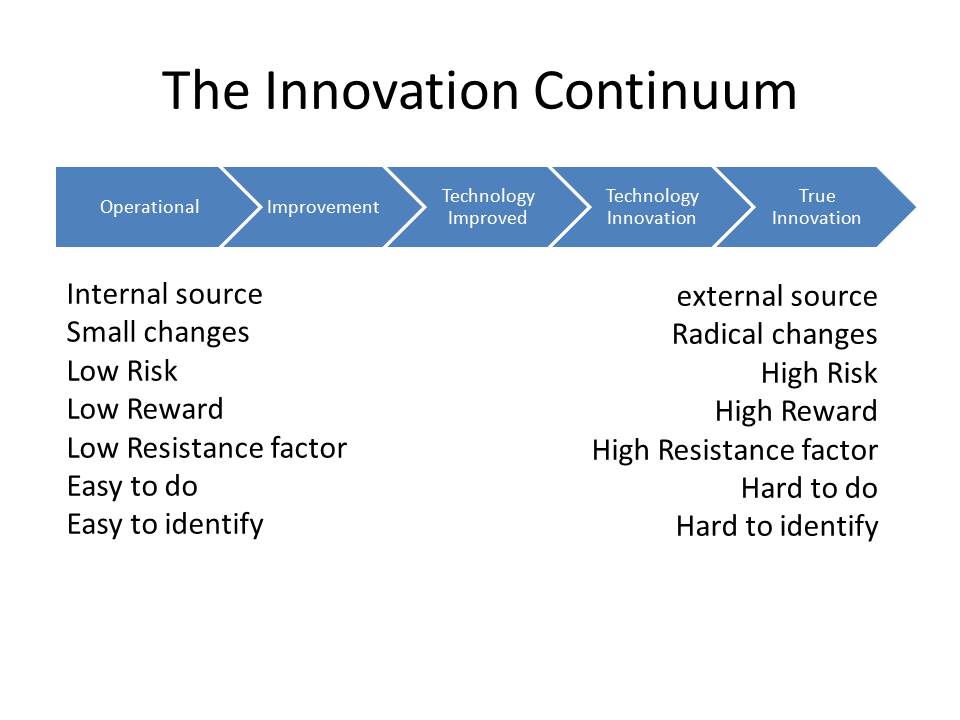The Innovation Continuum
 Now, I’m going to admit immediately, that this is a model that is still being tossed around in the unoiled gears of my brain. So if there are elements you disagree with please speak up. However, be prepared for me to have changed my mind by the time I reply. And be prepared for gaping holes in the model.
Now, I’m going to admit immediately, that this is a model that is still being tossed around in the unoiled gears of my brain. So if there are elements you disagree with please speak up. However, be prepared for me to have changed my mind by the time I reply. And be prepared for gaping holes in the model.
Periiodically, I will end up discussing (or listening to a discussion) on innovation that seems to lump all types of innovation together. The latest example was a video from Tony Robbins.
The problem is that not all innovation is the same and lumping it into one bucket leads to thinking that they share the same characteristics. And that’s just not true.
Rather, innovation is a continuum which can be described as fitting into five generic groups ranging from:
- Operational – meaning there is little or no innovation occurring.
- Improvement – meaning that the operation has identified (and fixed) weaknesses in its activities
- Technological improvement – meaning that any improvements are accidental resulting from replacement of technology due to obsolesence.
- Technolcgy Innovation – meaning that new technology has appeared which when adopted results in improvements in efficiency.
- True or Conceptual Innovation – meaning that a new idea or business model is adopted which moves the organization into a different situation (i.e blue ocean).
While any or all of the groups can result in a new business model (and thus a blue ocean) there are certain characteristics that follow the pattern of the groups from top to bottom.
For example, those changes at the low end are usually internal, sometimes coming from the customer but more often from the employees, generally involve less effect, and have a fairly low reward/loss value and less risk, often being a certainty. Often these are ignored and the organization is defined as beaurocratic and unchanging while in fact in may change.
Meanwhile, those at the high end, always are determined as a result of external influences, involve a much higher level of change, and typically involve high reward/high loss balances, and a much higher risk. seldom containing certain outcomes. At its most extreme, it is often described as “throwing the baby out with the bath water.”

